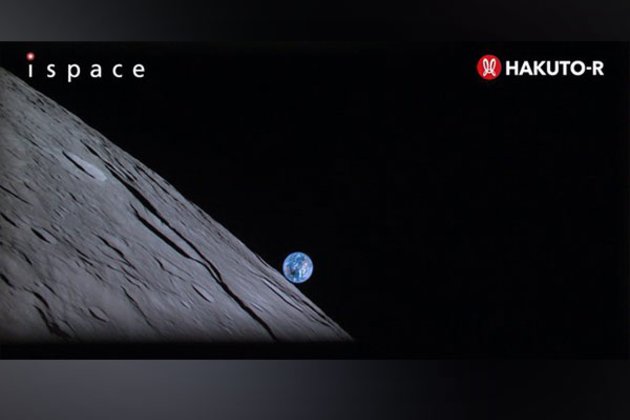

Washington [US], April 26 (ANI): A Japanese lunar lander, carrying a rover developed in the United Arab Emirates, attempted to find its footing on the moon’s surface Tuesday, and potentially mark the world’s first lunar landing for a commercially developed spacecraft, CNN reported.
But flight controllers on the ground were not immediately able to regain contact, prompting the company to presume the spacecraft was lost.
The lander, built by Japanese firm Ispace, launched atop a SpaceX rocket from Cape Canaveral, Florida, on December 11. The spacecraft then made a three-month trek to enter orbit around the moon, which lies about 239,000 miles (383,000 kilometers) from Earth, using a low-energy trajectory. Overall, the journey took the lander about 870,000 miles (1.4 million kilometers) through space, CNN reported.
Touchdown was expected to occur Tuesday at 12:40 p.m. ET, which is Wednesday at 1:40 a.m. Japan Standard Time.
Minutes passed as the mission control team worked to regain contact with the vehicle after an expected communications blackout. About 20 minutes after the planned landing time, Ispace CEO Takeshi Hakamada delivered an update, CNN reported.
“We have not been able to confirm successful landing,” he said, adding, “We have to assume…that we could not complete the landing on the lunar surface. Our engineers continue to investigate the situation.”He added that his team was able to gather data from the vehicle right up until the attempted landing, a “great achievement” that should help inform future Ispace missions.
The lunar lander, called Hakuto-R, was carrying the Rashid rover, the first Arab-built lunar spacecraft, which was built by Mohammed bin Rashid Space Centre in Dubai.
In history, only three countries have ever executed a controlled landing on the moon, the United States, the former Soviet Union and China. The US remains the only country to have put humans on the moon, CNN reported.
Japan’s Ispace had a different approach from prior lunar missions, attempting to land its spacecraft on the moon as a for-profit business rather than under the banner of a single country.
The lunar exploration company had been bracing for mishaps. “Recognizing the possibility of an anomaly during the mission, the results will be weighed and evaluated against the criteria and incorporated into future missions already in development between now and 2025,” the company noted in a December 11 post.
If successful, the 22-pound (10-kilogram) Rashid rover had been expected to emerge from the lunar lander and spend “most of the 14-day lunar daytime exploring the Atlas Crater on the northeast of the Moon,” according to the European Space Agency, which helped design the rover’s wheels.
The “Rashid rover is equipped with one high-resolution camera on its front mast and another mounted on its rear, as well as a microscopic camera and thermal imaging camera,” ESA said. “It also carries a ‘Langmuir probe’ to sample the plasma environment prevailing just above the lunar surface.”Japan’s Ispace is one of several companies that competed in the Google Lunar XPrize, which offered a USD 20 million reward to the company that could put a robotic rover on the moon, travel a couple of thousand feet, and transmit data back to Earth.
The Google-sponsored competition was scrapped in 2018, but Ispace was among the companies that chose to continue pursuing the mission.
Israel-based company SpaceIL was the first XPrize contestant to attempt to put its lander on the moon after the program ended. Its Beresheet spacecraft crashed in 2019 after ground teams lost contact with the lander as it approached the surface.
That same year, the Indian Space and Research Organisation (ISRO) lost contact with a lunar lander shortly before it was slated to touch down on the moon. Communications with the spacecraft were never regained, and images from NASA’s Lunar Reconnaissance Orbiter later revealed the crash site and final resting place of the mission.
A mission to retrieve lunar soil samples on behalf of NASA’s Artemis program, which intends to use commercial lunar landers to explore the moon’s surface, is part of Ispace’s future plans. (ANI)
24World Media does not take any responsibility of the information you see on this page. The content this page contains is from independent third-party content provider. If you have any concerns regarding the content, please free to write us here: contact@24worldmedia.com

A Brief Look at the History of Telematics and Vehicles

Tips for Helping Your Students Learn More Efficiently

How To Diagnose Common Diesel Engine Problems Like a Pro

4 Common Myths About Wildland Firefighting Debunked

Is It Possible To Modernize Off-Grid Living?

4 Advantages of Owning Your Own Dump Truck

5 Characteristics of Truth and Consequences in NM

How To Make Your Wedding More Accessible

Ensure Large-Format Printing Success With These Tips

4 Reasons To Consider an Artificial Lawn

The Importance of Industrial Bearings in Manufacturing

5 Tips for Getting Your First Product Out the Door